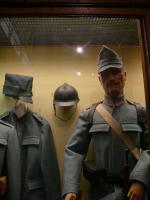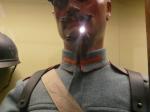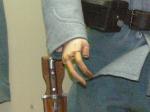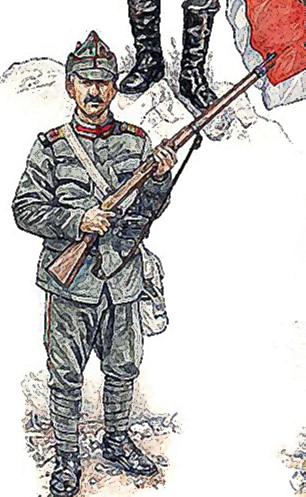
|
|||||||||||||||||||||||||||||||
On the 15th of August 1916, the army was divided into the following groups: Northern Army : 14th Infantry Division plus the 4th Brigade ( 25 battalions, 16 machine guns, 19 batteries ) ; 7th Infantry Division ( 21 battalions, 32 machine guns, 16 batteries ) ; 8th Infantry Division ( 24 battalions, 30 machine guns, 17 batteries ) ; 4th Calarasi Brigade ( 8 cavalry squadrons, 4 machine guns ) ; 2nd Cavalry Division ( 24 cavalry squadrons, 12 machine guns, 3 batteries ) ; 6 additional batteries held in reserve. 2nd Army : 3rd Army Corps : 5th Infantry Division ( 20 battalions, 34 machine guns, 16 batteries ) ; 6th Infantry Division ( 20 battalions, 34 machine guns, 15 batteries ) ; 5 additional batteries held in reserve 2nd Army Corps : 2nd Infantry Division ( 19 battalions, 24 machine guns, 20 batteries ) ; 3rd Infantry Division ( 19 battalions, 26 machine guns, 15 batteries ) ; 3rd Calarasi Brigade ( 8 cavalry squadrons, 4 machine guns ) was held in reserve. 1st Army : 1st Army Corps : 11th Infantry Division ( 13 battalions, 18 machine guns, 17 batteries ) ; 2nd Infantry Division ( 12 battalions, 18 machine guns, 14 batteries ) ; 1st Calarasi Brigade ( 4 cavalry squadrons, 4 machine guns ) ; The "Olt-Lotru" group ( 17 battalions, 22 machine guns, 12 batteries ) ; 1st Infantry Division ( 23 battalions, 30 machine guns, 22 batteries ) ; 12th Infantry Division ( 12 battalions, 16 machine guns, 8 batteries ) ; 13th Infantry Division ( 10 battalions, 14 machine guns, 10 batteries ) ; 3rd Army : Group West : 20th Infantry Division ( 16 battalions, no machine guns, 14 batteries ) ; Group Center : 1st Cavalry Division ( 24 cavalry squadrons, 12 machine guns, 3 batteries ) ;
16th Infantry Division ( 22 battalions, 42 machine guns, 18 batteries ) ; 18th Infantry Division ( 12 battalions, 4 machine guns, 14 batteries ) ; 2nd Calarasi Brigade ( 7 cavalry squadrons, 4 machine guns ) ; 15 additional artillery batteries were held in reserve. Group East : Turtucaia fortified position ( manned by the 17th Infantry Division - 19 battalions, 66 machine guns, 29 batteries ) ; Silistra fortified position ( 16 battalions, 66 machine guns, 17 batteries ) ; Cernavoda fortified position ( 2 battalions, 27 machine guns, 11 batteries ) ; 19th Infantry Division ( 18 battalions, 14 machine guns, 10 batteries ) ; 5th Calarasi Brigade ( 7 cavalry squadrons ). Supreme HQ's reserve : 5th Army Corps : 10th Infantry Division ( 14 battalions, 24 machine guns, 10 batteries ) ; 15th Infantry Division ( 12 battalions, 17 machine guns, 8 batteries ) ; 1st and 2nd Heavy Artillery Brigades ( 10 batteries ). As mentioned, at the start of the war, Romania actually had two fronts to fight on : the northern front, along the Carpathians and the south and south-east fronts, along the Danube and the Dobrogea province. According to the intelligence provided by the secret service, Austro-Hungary had some 70000 border troops spread out along the line of the Carpathians and 100000 more men could be concentrated in the area of the cities Cluj-Dej-Bistrita. Some 30000 enemy soldiers were also stationed in the Banat province, to the west of Romania. It was believed that the enemy would first try to delay the advance of the Romanian forces, then slowly pull back to the line of the river Mures, where the decisive battle would be fought. On the south front, the Bulgarian army was divided in three groups : western group ( 10000-15000 men ), central ( 25000-30000 men ) and east ( 70000-75000 men ). The Bulgarians were expected to try to mount small raids across the Danube, shell some targets on the Romanian shore and mayby launch an offensive into Dobrogea. The Romanian army's strategic objective was defined by a pre-war plan known as "Hypotesis Z", which stated that the army was to "...crush the enemy forces in Transilvania, then breakout into the Hungarian plains and overrun the agricultural areas which feed the Austro-Hungarian armies, namely the valleys of the rivers Tisa and Danube." To achieve this, 3 out the 4 armies were to be used : attacking into Transilvania, Banat and Hungary, with Budapest as the ultimate objective. These forces accounted for 65% of the Romanian army ; 25% were to defend the south front for the first 10 days, then attack together with a Russian army corps which was supposed to arrive ; 10% were held as a central reserve. In the first phase, the three armies were deployed as follows : the Northern Army would concentrate in Moldova and strike westwards across the upper valley of the river Mures, pushing the enemy back towards the Mures bend ; the 1st Army would concentrate in western Romania and attack into Banat, pinning down existing enemy troops ; the 2nd Army would concentrate in the north and push into Transilvania up to the line of the Mures, outflanking any enemy forces that might oppose the Northern Army.. All the three armies were to reach the Mures by D+25 day, D day being the day of mobilisation. Here, the planners believed the Central Powers would make their first stand. Next, the Apuseni mountains were to be reached in the second phase by the 2nd and Northern armies, whilst the 1st was to secure their south flank, by D+30 day. Finally, the Northern and 2nd armies would launch a single, concentrated attack across the river Tisa and into Hungary, with Budapest as the final objective. Meanwhile, the 3rd Army ( after the Russian corps would arrive ) was to launch a limited offensive into Dobrogea and north-eastern Bulgaria, aiming to destroy all enemy forces present there. Its actions were to be supported by the Danube flotilla and the Russian Black Sea fleet. The Supreme HQ's plan for the 1916 campaign was generally appropiate to the situation and realistic enough to be put into practice. It did have however one major flow : it relied heavily on factors which were not under Romania's control. Mounting two separate offensives was possible only if the Central Powers would have been so heavily engaged on other fronts that they wouldn't be able to send reinforcements quickly to their troops. Furthermore, the 3 armies which marched into Transilvania were spread out evenly across the whole length of the mountains, which meant that the overall superiority in numbers ( 2.4/1 in infantry and 3/1 in artillery ) wasn't fully exploited. In the long run, mayby the Apuseni mountains, in the west of Transilvania, should have been the objective of the second phase of the offensive, because they offered much better terrain for defense and a shortened frontline. In Dobrogea, the divisions of the 3rd Army were too far apart to assist each other, should any of them find itself in trouble. The Central Powers During the spring of 1916, the Central Powers started to realize that Romania was lost for their cause and talks started between the German, Austro-Hungarian and Bulgarian high command about a common strategy. At the same time, the Transilvanian railroad network was expanded and improved, so that the movement of troops would be easier. On the 29th of July 1916, general Falkenhayn, chief of the German Supreme HQ, general Conrad, chief of the Austro-Hungarian HQ and colonel Gancev, represenative of the Bulgarian Supreme HQ signed an agreement regarding military actions which were to be taken against Romania. A week later, Enver Pasha, head of the Turkish HQ also signed the agreement. The German generals Luddendorf and Hindenburg drew up the plans for the case of a Romanian offensive into Transilvania. Basically, the Austro-Hungarian troops were to slowly pull back in order up to the line of the Mures, whilst German reinforcements would pour into Transilvania and stop the Romanians. Afterwards, the Central Powers were to take the offensive on both fronts, defeat the Romanian armies, advance on Bucharest and occupy it, therebyfore knocking Romania out of the war. Throughout July 1916, the 1st Austro-Hungarian army was created in central Transilvania, under the authority of Army Group South. Due to the difficult situation created by the great Russian offensive, the 1st army was made mostly of improvised units of low quality. On the 15th of August, the army had 51 battalions, 9 cavalry squadons and 25 batteries. Fortifications started to be erected on the west banks of the Mures and Tarnava Mare rivers, where the army was to make its stand. Meanwhile, the 3rd Bulgarian Army was concentrating on the borders of Dobrogea.
|
|
Droit d’auteur La plupart des photographies publiées sur ce site sont la propriété exclusive de © Claude Balmefrezol Elles peuvent être reproduites pour une utilisation personnelle, mais l’autorisation préalable de leur auteur est nécessaire pour être exploitées dans un autre cadre (site web publications etc) Les sources des autres documents et illustrations sont mentionnées quand elles sont connues. Si une de ces pièces est protégée et que sa présence dans ces pages pose problème, elle sera retirée sur simple demande. Principaux Collaborateurs:
Nb
de visiteurs:8789073 Nb
de visiteurs aujourd'hui:3843 Nb
de connectés:236
| |||||||||||||||||||||||||||||





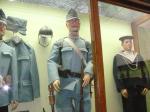
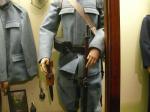
.JPG)

.JPG)
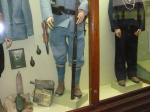
.JPG)
